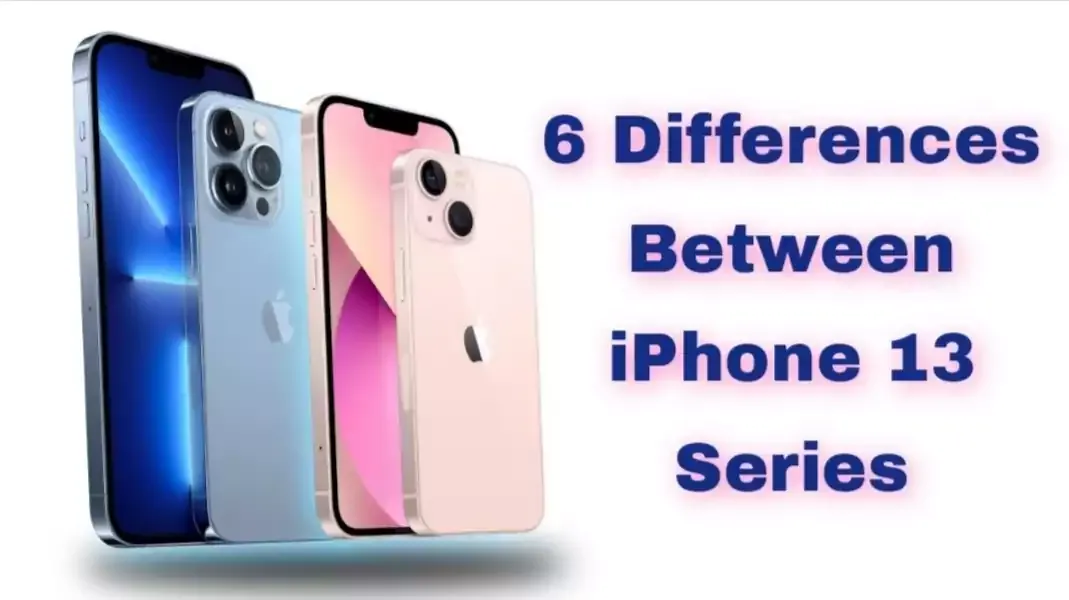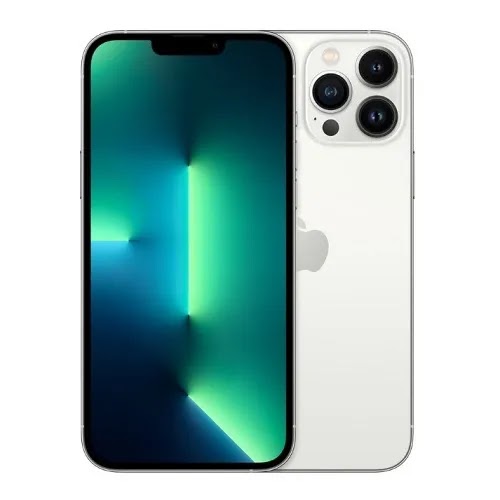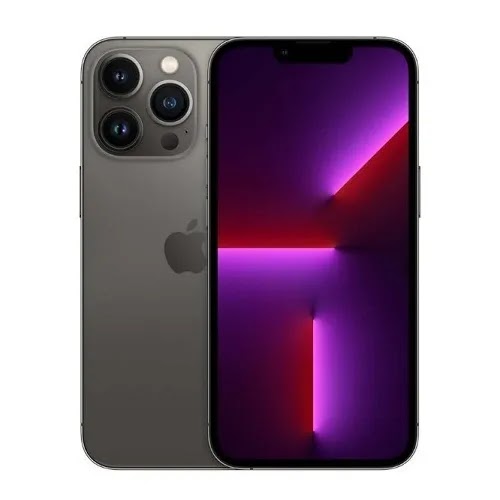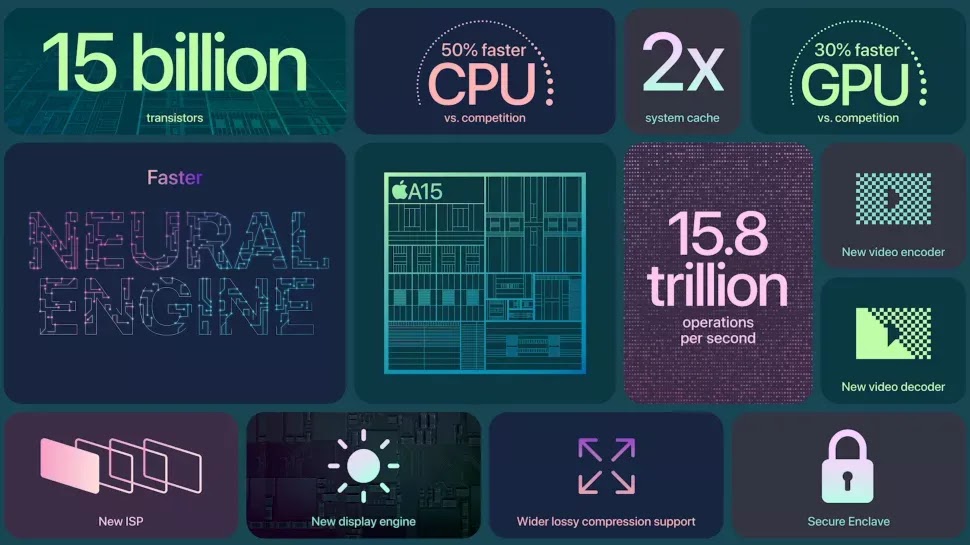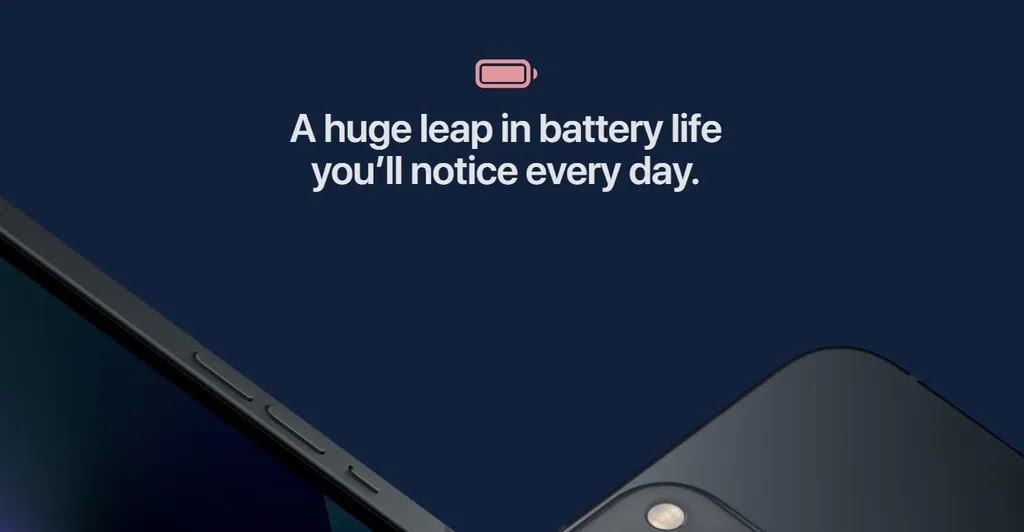Apple officially introduced the iPhone 13 Series on September 14, 2021. There were four smartphones that they showed to the public. Starting from the highest caste: iPhone 13 Pro Max, iPhone 13 Pro, iPhone 13, and iPhone 13 mini.
The number of iPhone 13 Series smartphone models is the same as the previous generation. When Apple released the iPhone 12 Series in October 2020, there were four Mobile phones that appeared. The four Mobile phones are the iPhone 12 Pro Max, iPhone 12 Pro, iPhone 12, and iPhone 12 mini.
Apple certainly provides a number of changes and improvements to the iPhone 13 Series, although in terms of appearance it is still similar to the iPhone 12 Series. These changes and improvements include: the A15 Bionic chipset, support for a 120 Hz refresh rate, and the ability to accommodate two e-SIMs.
However, Techpk will not discuss the improvements in any sector that the four iPhones get. What we will focus on in this article are the differences between the four iPhone 13 Series.
This article is useful for those of you who may be thinking about buying a new iPhone, but haven’t figured out which model fits your needs and budget. Alright, as an introduction, please listen to the main specifications of the four iPhone 13 Series as follows.
{tocify} $title={Table of Contents}
Contents
Show
iPhone 13 Pro Max Specifications
- Release: September, 2021
- Display: 6.7-inch Super Retina XDR OLED, 1284 x 2778 pixels
- Chipset: Apple A15 Bionic (5 nm)
- GPU: Apple GPU (5-core graphics)
- RAM: 8GB
- Internal Memory: 128GB, 256GB, 512GB, 1TB
- External Memory: –
- Rear Camera: 12 MP + 12 MP + 12 MP + TOF 3D LiDAR
- Front Camera: 12 MP + SL 3D
- Battery: Li-Ion, 28 hours video playback
iPhone 13 Pro Specifications
- Release: September, 2021
- Display: 6.1-inch Super Retina XDR OLED, 1170 x 2532 pixels
- Chipset: Apple A15 Bionic (5 nm)
- GPU: Apple GPU (5-core graphics)
- RAM: 8GB
- Internal Memory: 128GB, 256GB, 512GB, 1TB
- External Memory: –
- Rear Camera: 12 MP + 12 MP + 12 MP + TOF 3D LiDAR
- Front Camera: 12 MP + SL 3D
- Battery: Li-Ion, 22 hours video playback
iPhone 13 Specifications
- Release: September, 2021
- Display: 6.1-inch Super Retina XDR OLED, 1170 x 2532 pixels
- Chipset: Apple A15 Bionic (5 nm)
- GPU: Apple GPU (4-core graphics)
- RAM: 6GB
- Internal Memory: 128GB, 256GB, 512GB
- External Memory: –
- Rear Camera: 12 MP + 12 MP
- Front Camera: 12 MP + SL 3D
- Battery: Li-Ion, 19 hours video playback
iPhone 13 mini specifications
- Release: September, 2021
- Display: 5.4-inch Super Retina XDR OLED, 1080 x 2340 pixels
- Chipset: Apple A15 Bionic (5 nm)
- GPU: Apple GPU (4-core graphics)
- RAM: 6GB
- Internal Memory: 128GB, 256GB, 512GB
- External Memory: –
- Rear Camera: 12 MP + 12 MP
- Front Camera: 12 MP + SL 3D
- Battery: Li-Ion, 17 hours video playback
Differences between iPhone 13 Series
Apple’s goal of releasing four models at once is to reach more segments. Consumers with various backgrounds can also choose one of the four iPhone 13 Series phones according to their needs and abilities. The following are some of the differences between the four iPhone 13 Series phones.
1. Design and Dimension
There is nothing different from the design of the four iPhone 13 Series. They all have the same Apple logo in the center of the back cover. The four phones are also wrapped in a flat frame with curved corners, and a notch screen.
The only difference is the number of circles that each phone’s rear camera module holds. iPhone 13 Pro Max and iPhone 13 Pro are definitely more because they have four cameras and one flash . There are five circles on the rear camera module of both phones.
Meanwhile, the iPhone 13 and iPhone 13 mini only have three circles inside the camera module. It contains two cameras and one flash .
One more thing that is different about the design of the four phones is the size of the bangs or the notch . According to Apple’s claims, the notch of the iPhone 13 and iPhone 13 mini is 20% smaller than the previous generation. Well, the iPhone 13 Pro Max and iPhone 13 Pro are not explained, but we think the notch size is the same as its predecessor.
The number of circles in the module and the notch is n’t really that important, because all four phones have a similar design language. The most important point in this design difference is the type of material used and its dimensions.
For the frame material, the iPhone 13 Pro Max and iPhone 13 Pro agreed to use stainless steel . iPhone 13 and other iPhone 13 mini, they use aluminum for the frame. Outside of the frame, the four iPhone 13 Series have the same material, namely Gorilla Glass, for the front and back.
Regarding dimensions, the iPhone 13 Pro Max is the largest and the heaviest. It measures 160.8 x 78.1 x 7.7 mm and weighs 240 grams. Meanwhile, the iPhone 13 Pro and iPhone 13 have the same dimensions, which are 146.7 x 71.5 x 7.7 mm.
It’s just that, because it has different body materials and components, the iPhone 13 Pro is heavier at 204 grams, while the iPhone 13 is only 174 grams. The iPhone 13 mini is the most compact. The size of this tiny Mobile phone is 131.5 x 64.2 x 7.7 mm and weighs 141 grams.
Although the materials and dimensions are different, these four iPhone 13 Series phones both have IP68 certification. That is, they are dust and water resistant to a depth of 6 m for 30 minutes.
2. Display
The “Pro” frills on the iPhone 13 Pro Max and iPhone Pro make them have the most advanced display sector than the other two iPhone 13 Series models. Only size and resolution differentiate the two.
The iPhone 13 Pro Max has a 6.7-inch screen with a resolution of 1284 x 2778 pixels, while the iPhone 13 Pro screen is 6.1 inches wide with a resolution of 1170 x 2532 pixels. Both use Super Retina XDR OLED panels.
The panels used by the two phones are supported by a 120 Hz refresh rate , HDR10, Dolby Vision, and are capable of producing a typical brightness of 1000 nits.
The screens of both phones can also reach a brightness of 1200 nits, when playing HDR content. In addition, the screens of the iPhone 13 Pro Max and iPhone 13 Pro are translucent to the DCI-P3 color gamut, and have a contrast ratio of 2,000,000:1.
For iPhone 13, the panel type, span, and screen resolution are the same as the iPhone 13 Pro. However, the screen from this Mobile phone does not support high refresh rates. In addition, other technologies it has are the same as the iPhone 13 Pro screen. Except for its typical brightness level, which is stuck at 800 nits.
Meanwhile, all the technology and characteristics of the iPhone 13 screen are also owned by the iPhone 13 mini screen, except for the size and resolution. iPhone 13 mini uses a 5.4-inch screen with a resolution of 1080 x 2340 pixels.
3. Chipset
Apple did not explain in detail the profile of the Apple 15 Bionic chipset used by the four iPhone 13 Series. They did not reveal what the GHz clockspeed was and what architecture was used. This technology company from California, USA, only explained that the Apple 15 Bionic is a chipset made with 5 nm fabrication.
Inside is a six-core CPU with two clusters. Cluster performance has two cores , while the power-saving cluster contains six cores . Then, there are also 16 neural engine cores . This neural engine is said to be able to complete 15.8 trillion operations per second. In total there are 15 million transistors contained in the Apple 15 Bionic chipset.
Interestingly, the Apple 15 Bionic used by the iPhone 13 Pro Max and iPhone 13 Pro is different from the one used by the iPhone 13 and iPhone 13 mini. The difference is in the GPU.
The iPhone 13 Pro duo uses the Apple 15 Bionic which has a 5- core GPU , while the two iPhone 13s without the Pro use the Apple 15 Bionic with a 4-core GPU. This GPU difference is likely related to the different camera and screen capabilities on the four phones.
iPhone 13 Pro Max and iPhone 13 Pro which have more sophisticated cameras and screens, need a faster GPU to produce sharper photos and displays.
4. Memory Configuration
Apple’s official website does not mention the RAM capacity of each iPhone 13 Series model. However, GSM Arena said, 8 GB of RAM is used by the iPhone 13 Pro Max and iPhone 13 Pro. Meanwhile, the iPhone 13 and iPhone 13 mini use 6GB of RAM.
Well, for the internal memory, the iPhone Pro duo has more choices. Starting from 128 GB, 256 GB, 512 GB, up to 1 TB. On the other hand, the no-frills iPhone 13 Series Pro does not have a variant with 1 TB of internal memory.
According to GSM Arena, the type of internal memory used by all iPhone 13 Series models is NVMe ( Non-Volatile Memory Express ). NVMe is a different type of memory from UFS that the majority of Android phones use today. Even so, the speed of NVMe is quite competitive.
5. Camera
There is nothing different from the front camera of the entire iPhone 13 Series. All of them have a dual camera lens configuration. The first is a 12 MP camera with an aperture of f/2.2, and a 1/3,6-inch sensor size. The front camera is accompanied by a 3D SL sensor or more familiarly known as a depth sensor and biometric sensor.
Now, for the rear camera, Apple has again provided the “Pro” model with higher specifications than those without. There are four camera lenses that the iPhone 13 Pro Max and iPhone 13 Pro have.
In details, the main camera is 12 MP with f/1.5 aperture, 1.9 m pixel size, and 26 mm focal length. This main camera has IBIS ( In-body Image Stabilization ), which means a mechanical-based stabilizer. Then, there is a 12 MP ultrawide camera with an f/1.8 aperture , 120˚ viewing angle, and a 13mm focal length.
Furthermore, there is a 12 MP telephoto camera, f/2.8, which can perform optical magnification up to three times. This telephoto camera uses a focal length of 77 mm and has OIS or optical-based stabilizer.
The trio of 12 MP cameras owned by the iPhone 13 Pro Max and iPhone 13 Pro is equipped with autofocus and two dual-tone LED flashes . Well, there is still one more lens in the rear camera sector of the two Mobile phones, namely the ToF 3D LiDAR scanner lens.
Its function is similar to that of a depth sensor, in that it picks up important information around objects to produce good photos.
So, what about the back camera of the iPhone 13 Series duo without the Pro? Both the iPhone 13 and iPhone 13 mini both use a dual camera configuration. The first is a 12 MP camera with an aperture of f/1.6 and each image pixel measures 1.7 m. This camera has a focal length of 26 mm, IBIS mechanical stabilizer, and autofocus.
The second camera is a 12 MP ultrawide camera . This camera has an aperture of f/2.4, has an angle of view of 120˚, and a focal length of 13 mm. There is no autofocus in this camera. The two main and ultrawide duo cameras of the iPhone 13 without Pro are accompanied by two dual-tone LED flash lights .
Another thing that is different about the camera is its video recording capabilities. The entire rear camera of the iPhone 13 Series can indeed record videos up to 4K resolution ranging from 30 fps to 240 fps.
However, what is special is that the rear cameras of the iPhone 13 Pro Max and iPhone 13 Pro are equipped with Cinematic mode capabilities to produce dramatic videos, with smooth focus shifts like professional cameras. The rear camera of the two Mobile phones is also capable of producing video with standard color 10 bit HDR and Dolby Vision HDR (at 60 fps).
In addition, the resulting video is saved in Apple’s Pro Res format so that the file size is not large, but the quality is still good. Cinematic mode is also present for the rear camera of the iPhone 13 and iPhone 13 mini, but not with Pro Res and 10 bit HDR recording.
The front camera of all iPhone 13 Series can produce videos up to 4K resolution at 24, 25, 30, and 60 fps. All of them are also equipped with a gyro-EIS stabilizer.
6. Battery
Apple has not disclosed how much battery capacity the four iPhone 13 Series have. The information they provide on the official website is only the type, which is lithium ion, and of course it cannot be removed. They only explain how long a cell phone will last if used in certain scenarios.
One of them is the video playback scenario, aka playing local videos on the cellphone. It is stated that the iPhone 13 Pro Max can last for 28 hours, while the iPhone 13 Pro can last up to 22 hours.
Meanwhile, with the same usage scenario, the iPhone 13 can last up to 19 hours, while the iPhone 13 mini can last up to 17 hours.
On the other hand, the Phone Arena site found information from credible leakers, regarding the original battery capacity of the four iPhone 13 Series. According to the leaker, the iPhone 13 Pro Max battery has a capacity of 4,352 mAh, the iPhone 13 Pro and iPhone 13 are 3,095 mAh, and the iPhone 13 mini carries a 2,406 mAh battery.
The data could be wrong, but it could also be right. To be sure, all iPhone 13 Series phones have increased battery capacity. The reason is, the entire iPhone 13 Series has better durability than its predecessor.
For example, above we explained that the iPhone 13 Pro Max can last for 28 hours in video playback scenarios . In the same scenario, the iPhone 12 Pro Max can only last for 20 hours.
Conclusion
Apple seems to be trying to continue the trend they had been doing when they launched four models of the iPhone 12 Series in 2020. This means that the iPhone 13 Series also has the same number of models. Broadly speaking, the only difference between the four is size and ability.
iPhone 13 Pro Max and iPhone 13 Pro have the same capabilities. However, the first-mentioned model has a larger size, bigger battery, and of course a wider screen landscape.
The same thing also happens to the iPhone 13 and iPhone 13 mini, both Mobile phones have similar basic specifications. However, the latter model is more compact, and the battery life is shorter.
The differences in size and capabilities on the four iPhone 13 Series were created to reach many segments. Of course the price is also different. So, out of these four Apple-made Mobile phones, which one is your favorite?
Images source www.apple.com
